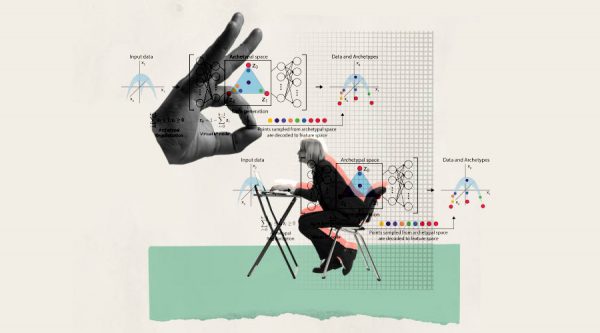Machine learning has become a disruptive force in the current era of technology advancement, changing the way complicated problems are approached. With the ability to detect equipment faults and optimise manufacturing processes, machine learning models have evolved into essential instruments. However, the calibre of training data is a prerequisite for any machine learning project to be effective. This tutorial presents techniques that close the knowledge gap between theory and practice while examining the subtleties of machine learning data collection in manufacturing and engineering.
The Problem with Data Availability
One major obstacle still exists, even with the democratisation of model construction through open-source machine learning frameworks: a dearth of domain-specific data. Manufacturing and engineering, in contrast, require context-specific data. Businesses must deal with data scarcity if they hope to enhance product design, streamline production, and obtain a competitive edge.
The Search for Effective Data Gathering
ML Models Under Supervision and Training Data: Large amounts of training data are needed for supervised machine learning models in order to accurately replicate intricate mechanical systems and processes. Since real-world simulations and experiments are costly and time-consuming, it is essential to collect a sufficient amount of sample data.
Design of Experiments (DOE): In engineering and manufacturing, DOE is a conventional method of data collection. These methodical approaches enable engineers to explore a wide range of characteristics and how they affect outcomes. DOE is dependable but resource-intensive at times.
Active Learning (AL): With the potential to decrease data requirements, Active Learning (AL) is a promising area in machine learning research. AL uses sample-specific label selection to achieve better prediction results with less data points. It’s surprising how little AL is utilised in the industry.
Assessing Data Sampling Techniques: We provide an assessment framework to examine different sampling strategies for engineers and data scientists. This is how we assess their efficacy.
Sample efficiency: The ability of a sampling technique to generate accurate models with the fewest samples is a crucial factor to consider when assessing sampling techniques. In this regard, AL often outperforms DOE since it selects samples for labelling intelligently, obviating the need for a sizable labelled dataset.
Stability: A key factor to examine is the stability of the model across multiple datasets. By dynamically choosing samples according to the current state of the model, AL demonstrates flexibility and stability and produces more consistent models.
Predictive Accuracy: In the end, an ML model’s performance is quite important. We examine the predictive performance of AL and DOE. While DOE’s systematic sampling may produce more robust models in some cases, AL’s iterative method tends to increase model correctness over time.
Exemplary Use Cases: Additive Manufacturing: Because AL is effective at capturing pertinent details unique to the additive manufacturing process, it can be preferred in this use case. With careful sample selection, AL can assist in creating precise models with less data.
Energy Management: DOE or AL may be more appropriate depending on the particular duty within energy management. For example, AL’s adaptive sampling might be useful if the objective is to maximise a building’s energy use.
Topology Optimisation: In topology optimisation, AL’s capacity to learn from little input may be especially helpful. AL can assist in optimising complex structures while reducing the requirement for lengthy simulations by making wise sample selections.
Useful Advice for Effective Data Gathering in Manufacturing and Engineering Hybrid Methods
Hybrid Approaches: In order to optimise data collection for machine learning (ML) applications in engineering and manufacturing, Active Learning (AL) and Design of Experiments (DOE) should be considered together. DOE can make sure that the collected data effectively covers the whole design space, while AL can assist in prioritising data collecting by choosing the most instructive samples.
Superior Quality Compared to Quantity: It’s critical to put quality and diversity above quantity when searching for data. While varied data helps represent the diversity of real-world settings, resulting in a more robust model, high-quality data guarantees the ML model’s accuracy and dependability.
Domain Knowledge: Early on in the data collection process, involve engineers and subject matter experts. Their knowledge of the nuances of the engineering and production processes is crucial for defining pertinent features. Including them early on can assist guarantee that the information gathered is accurate and appropriate for the machine learning use.
To sum up, effective data collection is essential for machine learning applications in engineering and manufacturing to be successful. We can realise the full potential of machine learning in these dynamic sectors by utilising domain expertise, employing hybrid methodologies, and placing a high priority on data quality.
Editors Corner
Recommended News
Google: AI From All Perspectives
Alphabet subsidiary Google may have been slower than OpenAI to make its AI capabilities publicly available in the past, but...
US And UK Doctors Think Pfizer Is Setting The Standard For AI And Machine Learning In Drug Discovery
New research from Bryter, which involved over 200 doctors from the US and the UK, including neurologists, hematologists, and oncologists,...
An Agreement Is Signed By MEA, MeitY, And CSC To Offer E-Migration Services Via Shared Service Centers
Three government agencies joined forces to form a synergy in order to deliver eMigrate services through Common Services Centers (CSCs)...
PR Handbook For AI Startups: How To Avoid Traps And Succeed In A Crowded Field
The advent of artificial intelligence has significantly changed the landscape of entrepreneurship. The figures say it all. Global AI startups...
Related Posts

IndiaNext Brings you latest news on artificial intelligence, Healthcare & Energy sector from all top sources in India and across the world.
Recent Posts
© India Next. All Rights Reserved. | Privacy Policy
|
Web Design & Digital Marketing by Heeren Tanna








